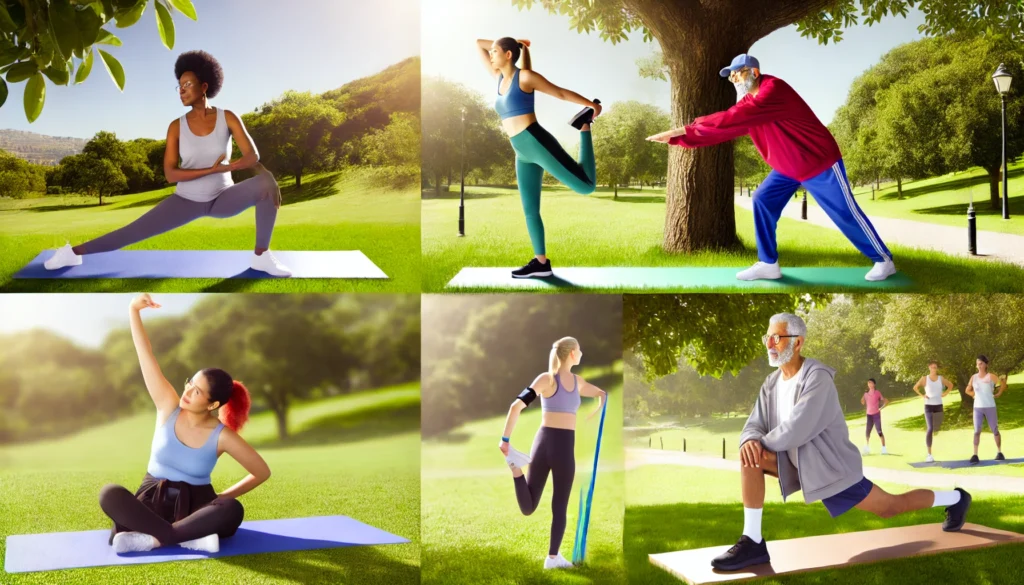
For those over 40, starting a fitness routine can feel intimidating, but it doesn’t have to be. Experts suggest focusing on low-impact cardio activities like walking or swimming, which not only enhance cardiovascular health but also protect the joints. Incorporating strength training and flexibility exercises is equally essential for maintaining muscle mass and mobility. However, the key to long-term success lies in creating a sustainable routine that fits individual lifestyles. The question remains: what specific strategies can make this journey both enjoyable and effective?
Importance of Fitness After 40
Staying fit after 40 is essential, as it helps maintain health, boosts energy levels, and enhances overall quality of life. Many individuals in this age group often feel the pressure of daily responsibilities, but prioritizing fitness can create a sense of community and belonging. Engaging in regular physical activity not only improves physical health but also fosters social connections, which are crucial for emotional well-being.
As metabolism naturally slows with age, incorporating fitness routines can counteract weight gain and reduce the risk of chronic diseases. Simple activities like walking, yoga, or group classes can make exercise enjoyable, allowing individuals to bond with others who share similar goals. This camaraderie can motivate them to stay committed and accountable.
Moreover, keeping active enhances mental clarity and reduces stress, making it easier to navigate life’s challenges. When people focus on fitness, they often find themselves surrounded by supportive friends who encourage their journey. This sense of belonging can transform workouts from a chore into a fulfilling experience.
Ultimately, embracing fitness after 40 cultivates a healthier lifestyle, strengthens relationships, and contributes to a vibrant, joyful life.
Low-Impact Cardio Options
For those over 40 looking to boost their fitness, low-impact cardio options provide a gentle yet effective way to elevate heart rates without placing excessive strain on the joints. Activities like walking, swimming, and cycling are excellent choices that cater to various fitness levels while fostering a sense of community.
Walking, particularly in a group, not only enhances physical health but also nurtures social connections. Swimming offers a rejuvenating alternative that supports the body while delivering a full-body workout, making it a favorite among many. Cycling, whether on a stationary bike or outdoors, allows for flexibility in intensity and environment, encouraging participants to enjoy their surroundings.
Incorporating these low-impact options into a weekly routine can lead to significant improvements in cardiovascular health, endurance, and overall well-being. Plus, joining local classes or clubs can create a supportive atmosphere where individuals can share experiences and motivate one another.
Ultimately, embracing low-impact cardio not only helps individuals over 40 stay fit but also cultivates a sense of belonging within a vibrant community, proving that age is just a number when it comes to pursuing a healthier lifestyle.
Strength Training Essentials
Strength training essentials play an essential role in building muscle, enhancing metabolism, and maintaining bone density for those over 40. Many individuals in this age group often find themselves feeling intimidated by the idea of lifting weights. However, embracing strength training can be both empowering and rewarding.
Starting with bodyweight exercises like squats, push-ups, and lunges helps establish a solid foundation. These movements engage multiple muscle groups and can be easily modified to suit different fitness levels. Once comfortable, individuals can incorporate resistance bands or light dumbbells for added challenge.
Focusing on major muscle groups—legs, back, chest, and core—ensures a balanced approach. It’s important to prioritize proper form over heavier weights to prevent injuries and build confidence. Gradually increasing resistance while maintaining a consistent routine will lead to noticeable strength gains.
Joining a community class or finding a workout buddy can add a sense of belonging and motivation. With shared goals and support, individuals can enjoy the process of getting stronger together, fostering friendships and a positive mindset.
Embracing strength training not only enhances physical health but also cultivates a sense of achievement and connection.
Flexibility and Balance Exercises
Flexibility and balance exercises are essential for maintaining mobility and preventing falls as individuals over 40 engage in an active lifestyle. These exercises not only enhance physical performance but also foster a sense of community among participants.
Simple activities like yoga, Pilates, and tai chi offer fantastic ways to improve flexibility while promoting mindfulness and relaxation. In a supportive environment, individuals can connect with others who share similar health goals, making the journey more enjoyable.
Stretching routines, aimed at loosening tight muscles, can be easily incorporated into daily life, and they don’t require special equipment. Balance exercises, such as standing on one leg or using a stability ball, help build core strength and coordination.
Engaging in these activities regularly can boost confidence and reduce the risk of injury. Moreover, group classes specifically designed for beginners encourage camaraderie and motivation. Individuals often find that they’re not alone in their fitness journey, creating a sense of belonging that enhances the overall experience.
Creating a Sustainable Routine
Building on the foundation of flexibility and balance exercises, creating a sustainable routine requires consistency and a personalized approach that fits individual lifestyles and goals.
It’s essential for beginners over 40 to assess their current fitness levels and set realistic, attainable objectives. This way, they can gradually build confidence and motivation.
Incorporating activities they enjoy makes sticking to a routine much easier. Whether it’s walking with friends, dancing, or swimming, finding joy in movement fosters a sense of community and belonging.
Scheduling workouts at convenient times also helps establish a habit, ensuring they don’t feel overwhelmed.
Listening to their bodies is vital, too. Beginners should prioritize rest and recovery, allowing time for muscles to adapt and grow stronger. Mixing up routines with different exercises can prevent boredom and keep motivation high.
Connecting with like-minded individuals, whether through classes or online groups, can offer support and encouragement. Sharing experiences and celebrating progress together helps reinforce commitment.
Ultimately, a sustainable fitness routine is about progress, connection, and finding what works best for them, creating a lifestyle that’s both enjoyable and fulfilling.
Frequently Asked Questions
What Should I Wear for Exercising After 40?
When choosing workout attire, she prioritizes comfort and support. Breathable fabrics, proper footwear, and well-fitted sports bras help her feel confident and capable. Layering options can adapt to changing temperatures during outdoor activities.
How Do I Stay Motivated to Work Out Regularly?
To stay motivated, she sets realistic goals, finds a workout buddy, and celebrates small achievements. Joining a supportive community helps her feel connected, making exercise enjoyable and encouraging her to stick to her routine.
Can I Exercise if I Have Chronic Health Issues?
Sure, many people with chronic health issues can exercise safely. They should consult healthcare professionals first, then start with gentle activities like walking or stretching. Finding supportive communities can enhance motivation and enjoyment during workouts.
What Are the Best Times of Day to Exercise?
She finds that early morning sessions boost her energy, while afternoons help her unwind. Evening workouts fit well into her routine, allowing flexibility. Ultimately, the best time’s when she feels most motivated and focused.
How Do I Track My Fitness Progress Effectively?
To track fitness progress effectively, she recommends keeping a journal, using apps, or taking photos. Regularly measuring weight and endurance helps him see improvements, fostering motivation and a sense of achievement in his fitness journey.
Conclusion
To sum up, embracing fitness after 40 can lead to improved health and energy.
By focusing on low-impact cardio, strength training, and flexibility exercises, individuals can enhance their overall well-being while reducing the risk of injury.
Establishing a routine that incorporates enjoyable activities not only fosters commitment but also connects them with a supportive community.
With the right approach, anyone can achieve a fulfilling fitness journey, proving that it’s never too late to prioritize health and wellness.










